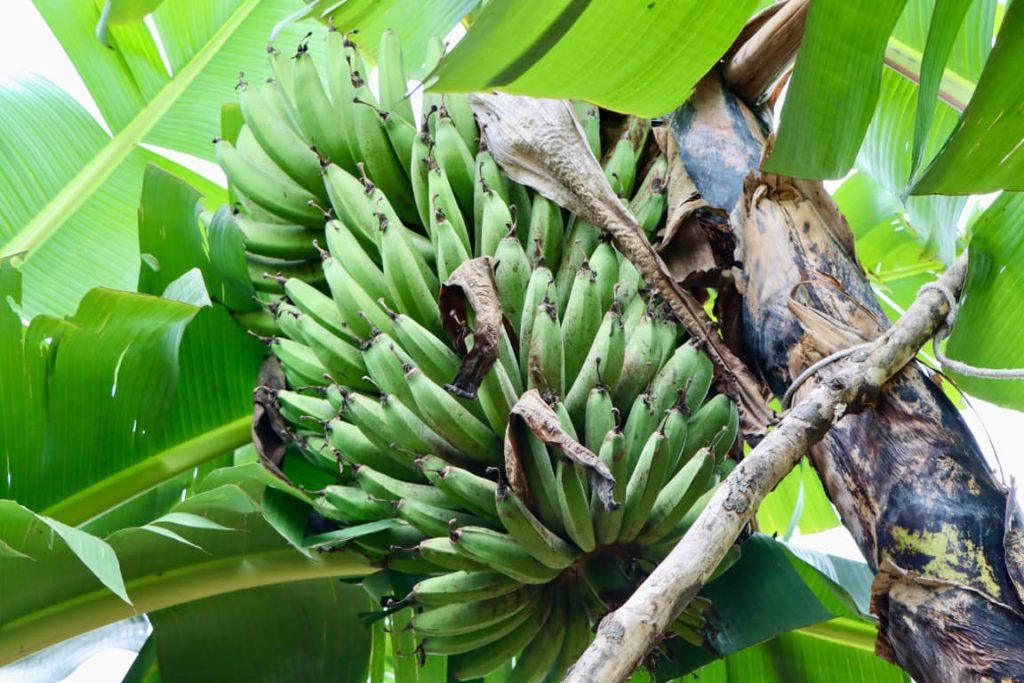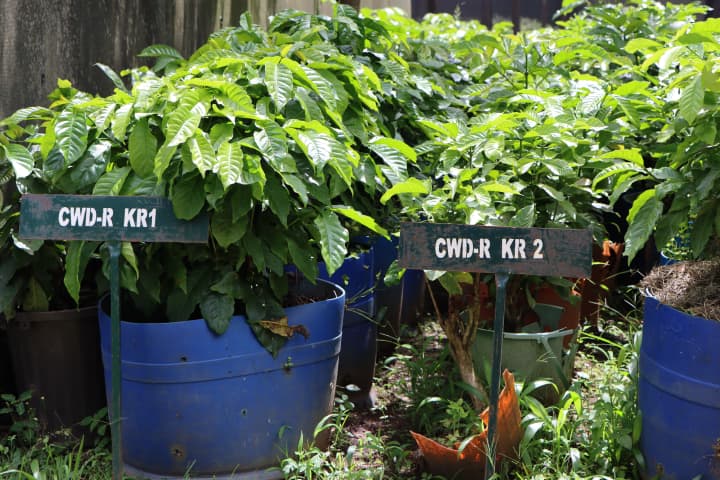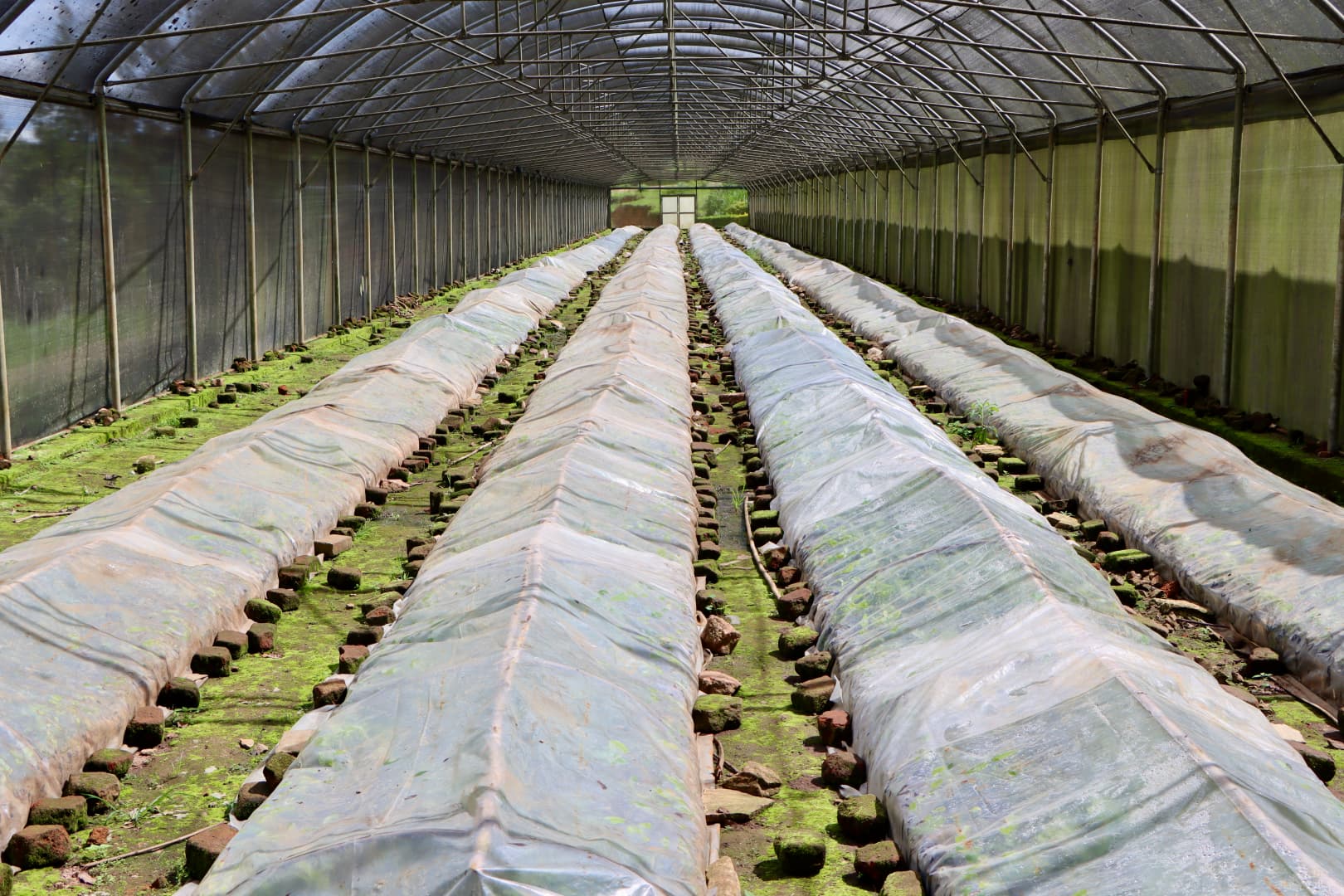- Banana
Uganda is the second largest producer of bananas after India. More than 75% of all farmers grow bananas, the country’s staple food. The Banana is an important economic resource for rural farmers in Uganda. With a total annual production estimated at about 10 million tonnes, the crop ranks high among enterprises that support livelihoods of smallholder poor rural farming communities.

Bananas Cultivars
Royal Plants & Nurseries (RPN) Ltd is producing 8 (eight) cultivars of Banana by plant tissue culture micropropagation;
- East African Highland Bananas – Kibuzi, Mbwazirume, Mpologoma, Mutule and Nakitembe.
- East African Hybrid Bananas – M09
- Dessert Bananas – Gonja
Ecological Requirements
- Soils: Deep, fertile soils are essential with free draining, capable of retaining reasonable moisture.
- Rainfall: Best areas for planting bananas are areas of high to medium rainfall above 800 mm with moderate temperatures.
- Altitude: Both low and high altitudes are favourable.
Planting
Bananas should be planted in blocks to shelter them from wind rather than in strips, so that the plants give each other self protection since they are highly susceptible to wind damage.
- Planting Time: This is best done at the beginning of the main rains.
- Hole Preparation: Holes should be at least 60 cm (2 ft) in diameter, 60 cm (2 ft) wide and 60 cm (2 ft) deep and filled with a mixture of compost manure and topsoil before planting.
- Plant Spacing: Spacing varies with different cultivars of banana; on average, the spacing ranges from 2.4 metres to 4.5 metres between the holes.
Fertiliser Application
To obtain a high yield, the banana plants require a large supply of mineral nutrients. This can be achieved by adding fertilisers for example farm yard manure.
Harvesting
In tissue culture bananas, depending on the cultivar, the first flowering starts 12 to 15 months after planting and the first bunch becomes ready within 3 months after flowering. The total duration of planting to harvesting time will be 15 -18 months.
- Cassava
[insert text]
- Coffee
Coffee is the main cash crop exported in Uganda, contributing between 20 – 30% of the foreign exchange earnings. Most of the coffee grown in Uganda is exported. The most common coffee grown in Uganda is Robusta coffee, whose native habitat is the Lake Victoria Crescent. Robusta Coffee is grown in the low altitude areas of Central, Eastern, Western and South Eastern Uganda.
Arabica coffee was introduced to Uganda from Ethiopia and naturalised in highland areas along the slopes of; Mount Elgon in Eastern Uganda, Mt. Rwenzori in Western Uganda and Mt. Muhabura in South Western Uganda.
The different modes of coffee propagation done at Royal Plants & Nurseries (RPN) Ltd are;
TISSUE CULTURE MICROPROPAGATION
Coffee Lines
RPN is producing 7 lines of Robusta coffee which are resistant to coffee wilt disease by micropropagation using plant tissue culture. These lines are KR1, KR2, KR3, KR4, KR5, KR6 and KR7.

Ecological Requirements
- Soils: Soil should be deep, well drained and slightly acidic in reaction; pH 6.0 – 6.5
- Rainfall: Robusta Coffee requires annual rainfall of about 1500 – 2500 mm.
- Altitude: Robusta coffee performs well in low altitude areas about 1,200 – 1,500 m above sea level.
Planting
- Planting Time: This is best done at the beginning of the main rains to ensure adequate moisture penetration down the soil.
- Hole Preparation: Holes should be at least 60 cm (2 ft) in diameter, 60 cm (2 ft) wide and 60 cm (2 ft) deep and filled top soil followed by subsoil mixed with compost manure before planting at the onset of the rains.
- Plant Spacing: Spacing for Robusta coffee is 3m (10 ft) by 3m (10 ft).
Fertiliser Application
Application of NPK fertiliser per tree after planting will accelerate the growth of the plant. The fertiliser is applied in a band around the base of the tree monthly for the first two months.
Harvesting
For Robusta Coffee, the flowering starts 10 to 13 months after planting and the fruit development begins 5 months after flowering. The total duration of planting to harvesting time will be 15 – 18 months.
- Potatoes
[insert text]

